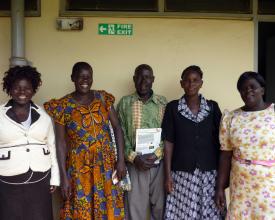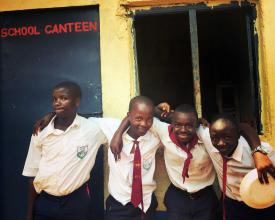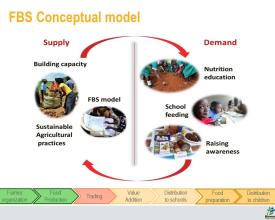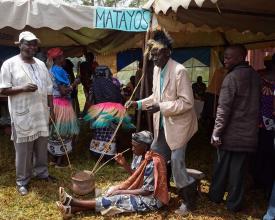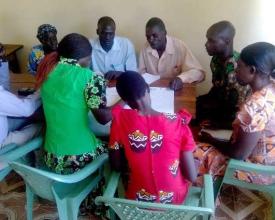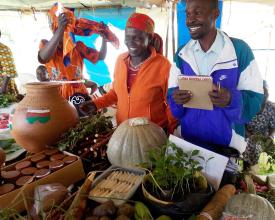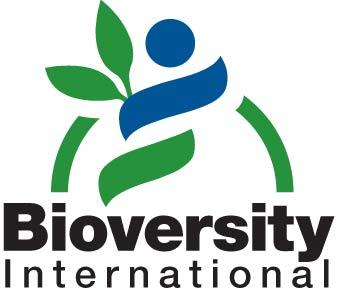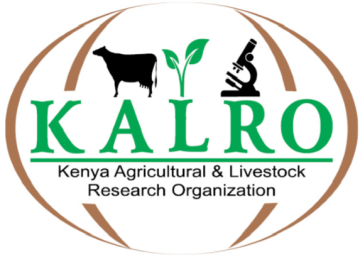
Kenya's School Food Revolution
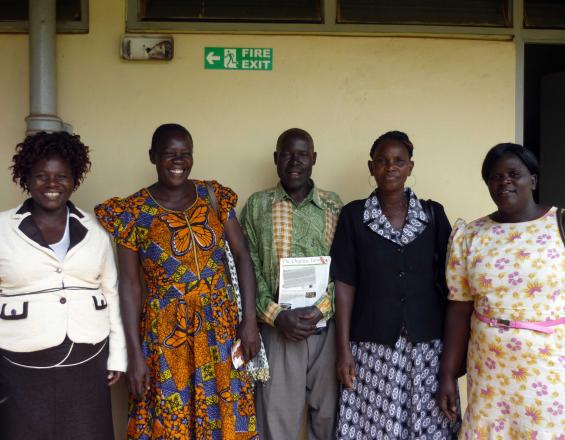
Once perceived as “food for the poor”, African Leafy Vegetables (ALVs) and other forgotten crops are making a comeback in Busia County, Kenya, thanks to a pilot project supported by ACIAR and GEF and a participatory multi-sectoral platform that brings together farmer organizations, non-governmental organizations, and national and international government agencies. The project is helping revive interest in nutritious ALVs by building the capacity of entrepreneurial farmer groups to sustainably produce, use and respond to market demands for these crops from institutional markets (e.g. school feeding and health clinics). At the same time, education activities are taking place to increase the appreciation and use of local biodiversity to improve dietary diversity and nutrition and environmental resilience but also to provide sustainable, long-term support and empowerment to children, families and communities.
Context
Challenges addressed
Poverty rates in Busia range from 63% to 74%. Two out of three citizens are unable to meet their basic food needs and 26.6% children under five are stunted, 11% are underweight and 4% are thin due to malnutrition. Studies have shown that farmers in Busia are unaware of improved agricultural practices and technical solutions because extension staff are too few and lack transport and resources to reach the high number of small-scale farmers. Low government investments and support for farmers, lack of quality seed, limited access to markets and finance, as well as poor knowledge of value addition, post-harvest handling, food safety and hygiene practices exacerbate these problems. Further, the focus of agricultural development on producing larger quantities of a few, energy-rich staples has led to the neglect of a large number of highly nutritious local species which are rapidly disappearing from the environment and from people’s diets.
Location
Process
Summary of the process
Existing information on the nutritional value of indigenous vegetables and new data generated by the project were used to raise awareness of the importance of incorporating these species within a varied and balanced diet both on the supply and the demand side of the value chain. On the supply-side of the food value chain, the model set out to build the capacity of smallholder farmers to respond to increasing market demand for nutritious crops by providing training on food production, business management and value addition through the Farmer Business School model. Simultaneously, on the demand-side, awareness raising activities such as the Busia Food Fair, helped build interest in local crops, which subsequently resulted in a select number of schools, clinics and early child development centres introducing them in their institutional meals' programs.
Building Blocks
Developing a Farmer Business School (FBS)
Ensuring that farmers are able to competitively supply food to any future home-grown school meals programme, or other institutional market, will be essential for improving livelihoods and generating broad-based health and economic growth. Currently, the guarantee of a steady supply of fresh vegetables remains a challenge and schools are accustomed to purchasing food from one or more larger traders following government guidelines for contracts and bidding processes. Trainings provided through the Farmer Business School on sustainable agricultural practices and the provision of certified seed have helped farmers scale up their production levels for indigenous vegetables, while guidance on gross margin analysis and bidding processes has increased farmer skills in contract negotiation and in determining an equitable price for their produce. Prior to the training, a limited number of farmers had attended market and value addition trainings, expecting third parties to undertake market searches on their behalf. Following the training, farmers were more confident about going out to seek their own markets, particularly after learning that institutional markets were open to purchasing indigenous vegetables to increase dietary diversity for their beneficiaries and to improve nutrition.
Enabling factors
A consultative workshop held at the start of the project brought together farmer groups, schools and local administrators to identify the major constraints hindering the commercialization of African leafy vegetables. The workshop brought the supply (farmers) and demand (schools) sides of the value chain to the same table to discuss how the future supply of ALVs to institutional markets might look like, while an enabling environment was created for local administrators, who, prior to the project, had very little history of working together.
Lesson learned
On the production side, garnering interest from farmers can prove a challenge as time constraints are often a limiting factor for women farmers who have other domestic duties and responsibilities. Ideally, more time needs to be allocated to the roll out the FBS for it to work effectively. Furthermore, greater emphasis needs to be devoted to building capacity in value addition to enable farmers to sustain production capacity throughout the year. The process of linking farmers to institutional markets can also be a slow process, mostly due to problems of a logistical nature (transport, other work commitments by stakeholders) and to challenges in garnering support for the project from county players. Frequent visits to the school need to be made to successfully engage the school administration and attention paid to ensure the surrounding community, school staff and parents are aware of any agreement for local procurement. Suspicions about personal gains may arise when there is no common understanding about a project or community ownership.
Organize Traditional Food Fair
In the project's lifetime, two traditional food fairs were organised at Busia's Agricultural Training Centre. The food fairs increased community participation in managing biodiversity by changing people’s mind-set and attitude towards local foods. During the fairs farmers collected and competed for the most comprehensive display of plant parts, seeds, fruit samples and traditional food items. It was also an occasion for farmers to share biodiversity-related information and associated traditional knowledge as well as planting material and seeds, while it enabled the research team to locating new custodians of biodiversity. It is felt that the fairs have contributed in encouraging consumers, schools, youth, policy-makers and farming communities to make continued use of local crops and varieties, thereby contributing to their conservation.
Enabling factors
There is need to identify champions within the community and at the policy level to ensure that the message is adequately transmitted and supported. Organizing a traditional food fair also requires significant organizational skills, and therefore some thought should be given to assignining roles and responsibilities for different parts of the organization.
Lesson learned
- Sufficient funds should be sought, either through direct funding or in-kind (help in organizing the fair), as the events can be a costly affair
- Advertising - sufficient time should be allocated to widespread advertising prior to the event. Use every mean you can think of to ensure the message is spread. I.e. church groups, radio, sms broadcast, Whattsapp, social media, email
- Allow some space for competition. In the Busia event, seven farmer groups competed against each other for the best presentation and variety of traditional foods, but were also judged based on hygiene, value addition. Cooking competitions are also a hit and could be a good way of engaging the public
Impacts
SINGI promotes sustainable agricultural practices to establish home gardens using African Leafy Vegetables (ALVs) and other traditional crops. ALVs are weedy, semi-cultivated species that are adapted to growing in local environments, are more resistant to pest and diseases and require very little management, fertilizers and pesticides. They also provide ready and affordable access to key nutrients. SINGI has worked with partners to develop and test a workable food procurement model based on ALVs to promote the conservation of local food biodiversity while improving farmer livelihoods and promoting healthier school meals. Since the approach was launched in one pilot school in mid-2016 catering for 400 students, 14 contracts have been secured and the farm-to-school network is now providing healthy school meals to approximately 5,500 pupils. Quantities supplied vary between 10Kg per week to six times that amount while the agreed cost per kilo varies between US$0.30 and US$0.50 depending on the season. The linking of farmer groups to schools and health clinics has created employment opportunities for the farmers who now have a steady market for their produce while schools see the relationship of linking to local farmers as part of their social and environmental corporate responsibility.
Beneficiaries
Target beneficiaries are rural communities and smallholder farmers living in Busia who will benefit from increased household incomes and improved dietary diversity for all age groups with positive implications for economic growth and human wellbeing.
Sustainable Development Goals
Story
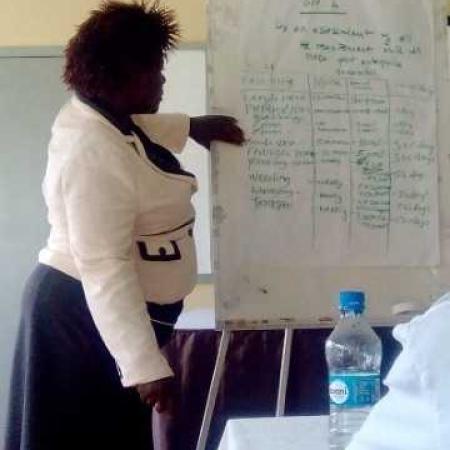
Upon the demise of her husband, Joyce Momanyi’s world had suddenly crumbled. A housewife and farmer from Nang’eni village in Nambale, Busia County, how would she make a living, send her children to school and use the five acre plot her husband had bequeathed her to feed her family? Like most people in her village she planted maize. The maize did well, but when she went to sell it in a nearby local market the market was flooded with grain from other smallholders, prices were low and her profits marginal. That was when she decided to try her luck in the production of African Leafy Vegetables (ALVs), a decision, she says, completely transformed her life. Joyce slowly started to devote increasing portions of land to ALV production. What compelled her was the fact that, compared to maize, indigenous vegetables grow faster and require fewer inputs and water. In just 3-4 weeks the vegetables were ready for harvest and to her surprise buyers were already lining up at her farm gate. “My neighbours are still venturing into maize production because they do not know the advantages of ALV production. ALVs take only 3 weeks to 1 month to get ready for the market while maize takes even 5 months to mature”. The more she expanded her ALV farm the more her clients increased. To lift others out of poverty she formed the Great Sisters Women Group - a group of young widows and elderly mothers - who attended the farmer business school run by the project. During the market training, she approached Esibembe secondary school and was able to secure a contract for her group. To cut seed purchases, Joyce also ventured into seed production. She says she will sell extra seeds to her group members. “How could an ordinary farmer like me have known that it is possible to make a school your market? I am so grateful”. Joyce has also managed to pay her children’s school fees. Through ALV production she has improved her household's economy and is certain that her husband is looking down proudly at her from above.

